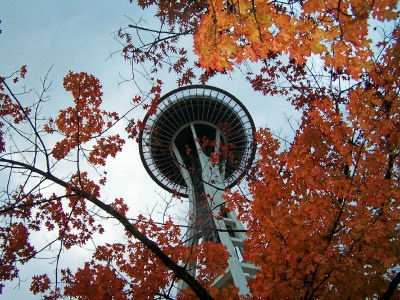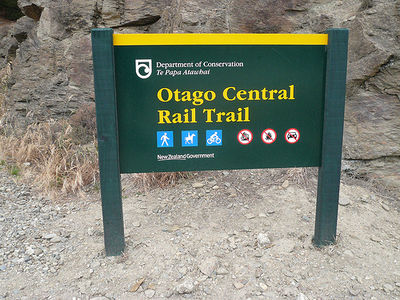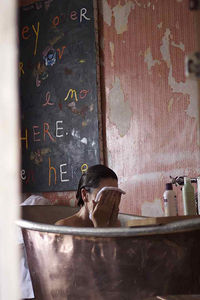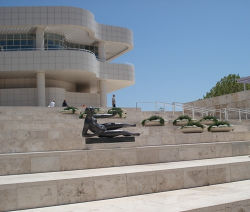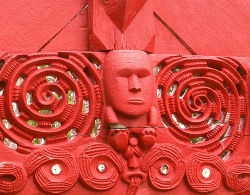Nouveau Tourism
- Tourism is a dynamic industry, evolving, changing, and continually reestablishing itself to meet the needs and desires of its potential clients. Whether new destinations are being created, old products reinvented, or new technology forging the way ahead, the industry continues to move on in an ever increasing model of adaptation.
This course will look at the latest ideas, trends, creations, moves in tourism, globally. If you find a good resource or have an idea for a new activity please list this on the weblog (link below). Feedback for this course is also welcome on the discussion page.
Read the Course Guideto gain a better understanding of the requirements of the course - the learning outcomes are listed below.
Learning Support
The following services are available for offering learning and assessment for this course:
- Otago Polytechnic offers learning support and assessment services through the Nouveau Tourism weblog.
- Course schedule - a time table for when the next course will start and the periods in which the study will be supported by teachers and learning facilitators.
Learning Objectives
1. Identify and understand the evolving nature of tourism.
2. Analysing the latest market trends.
3. Evaluate industry response to visitor needs.
Course Schedule
Following is a list of topics we will work through in this course.
Otago Polytechnic's course weblog will pace you through these topics and put you in touch with teachers, other students and a range of other media and information. Use this schedule as a way to look ahead and prepare in the course.
The evolving and dynamic nature of tourism
Just as tourism products, services, supplies and destinations have a life cycle so does the tourism industry. Recognizing relevant trends, the impact of past trends and allowing for new trends is part of the evolving and dynamic nature of the industry.
World tourism has undergone significant changes in the past few years; terriorism, recession, introduction of new technology, climate change, natural disasters. Throughout these changes it has continued to evolve and expand with growth in the industry now expected to start increasing again following lean times in 2008/09. What will travellers be seeking, what will destinations and companies be offering and most importantly from what sector/s in the global community will the increase for tourism product come from?
Examination of the external or macro environment in an attempt to understand its affect on tourism trends is a good move towards recognising future trends. There are several kinds of analytical tools which can be used for this. We can look at forecasting;which looks at information gathered and attempts to predict trends for the future, and is usually statistics based. Another tool is PESTELanalysis is an acronymn for Political, Economic, Socio-cultural, Technological, Environmental, and Legal. It is a useful strategic tool for understanding market growth or decline, business position, potential and direction.
Read this article from the European Travel Commission then complete a PEST analysis listing points under each heading.
Tourism trends designed to build economic growth and support the sustainability of past, current and future resources form the basis of targets being set and strategies being developed.
Here in New Zealand the establishment of a national cyclewayrunning the length of the country was an idea generated for a need to retain jobs through the global economic crisis of 2008/09.
The objective was to create jobs whilst creating a long-term national asset, both for New Zealanders and to enhance our reputation as a premium tourist destination during and after the economic crisis.
The Ministry of Tourism named four Otago trails among 13 selected nationally for feasibility studies in phase two of the New Zealand Cycle Trail project. These trails across Otago will bring almost $10.4 million in construction work to the province and many millions more in tourism-related earnings if approved.
Otago Central Rail Trail
Already established and 16th on the list of a 101 Must Do's - in New Zealand the Otago Central Rail Trail is, according to Prime Minister John Keys an example of what can be achieved through small, local infrastructure projects and has been a major incentive for the nationwide cycle project.
Born out of the closure of rural railways in the 1970's and 80's the rail corridor between Clyde and Middlemarch was purchased by the Department of Conservation in 1993 as a recreational reserve. It was officially opened in February 2000 is now considered a major tourist attraction.
In 2005, the Otago Central Rail Trail Charitable Trust developed a survey questionnaire to measure the economic impacts of the Rail Trail on businesses established in communities on the fringes of the trail. In 2008 the Trust repeated the effort to learn more about the successes and problems of businesses and communities affected by the Rail Trail, and administered a second survey to a similar sample in the same area, i.e. the Rail Trail’s Middlemarch – Clyde corridor, including the greater Maniototo and Strath Taieri areas.
Complete this railtrail activity, print out and hand in.
Globally leisure time seems to be increasing with seniors having more time but working people feeling more pressured with lack of time. This creates challenges for those in the industry trying to anticipate future trends. Shorter but more meaningful travel could be a result of resource rich but time poor tourists, with both benefiting from journey's that feature more personal challenge or self-development.
Tourism New Zealand’s role is to market New Zealand off-shore as a desirable visitor destination. This is done through the 100% Pure New Zealand marketing campaign.
Target Marketing is a business term meaning the particular market segment to which a product and/or service is marketed. A product focusing on a specific target market contrasts with one following the marketing strategy of mass marketing. Target marketing ensures more effective use of resources and allows the marketing mix - (Product, Price, Promotion, Place) to be specifically developed to suit an identified group of customers. The marketer can then look for similarities in benefits that customers in the group are seeking. A market segment is a sub group of people (in our case) sharing one or more characteristic that cause them to have similar product needs. Segmentation can be a useful strategy when there are a number of competitors in the market place.
One such market in New Zealand for 2011 - will be those following the Rugby World Cup. Around 85,000 international rugby fans and international media are expected in New Zealand for the tournament, which will be seen by an estimated global audience of over four billion. This will also provide New Zealanders with an opportunity to showcase their country as a destination for everyone. So that you will have a better understanding of not only the regional organisation (our guest speaker)for the world cup but also the national organisation complete this activity on the Rugby World Cup 2011.
What about the future? We have found that future tourists' will have; more time/less money, less time/more money, are still willing to travel long distances to a destination for the right event. So if they are looking something out of the ordinary in the future they could try......
Tourism Trends
Space Tourism
The Spaceship Company was formed in 2005 between the company’s founder, British entrepreneur Sir Richard Branson, and aerospace designer, Burt Rutan. Their goal - to build a fleet of commercial suborbital spaceships and launch aircraft. They even talk about space hotels and trips to the moon.
At Virgin Galactic, ticket sales for suborbital flights at $200,000 a seat are selling. In December 2009 aspiring space tourists were provided with the opportunity to see the Virgin galactic spaceship- their future ride into space. Richard Branson has already suggested that he along with some other celebrities may be some of the first airline travellers.
What would inspire a person to travel into space? Pay that huge amount? Risk their life. Find a civilian who has either travelled into space already or someone who has said they want to go and see if you can answer these questions.
Places with a difference
And what about somewhere different to stay; welcome to the Rough Luxe an anti-five star hotel in London's Kings Cross, where it looks as though the interiors were abandoned by the builders.
Or museums with a difference - Hakone Museum with a natural foot bath to soak your weary feet, or The Getty Centre in Los Angeles or the Getty Villa in Malibu.
Or something closer to home the Ellerslie Garden Show in Christchurch. Or celebrating garden tourism by visiting Dunedin's Larnarch Castle or attending the annual Rhododendron Festival.
For those who would like to try something different there is this mystery tour
Health & Wellness Tourism
The older age group market or senior citizens "Tourism's golden hope". Increased life expectancy and a greater understanding of proactive rather than reactive health care has already been reflected in current trends centered around the ever expanding industry of health and wellness.
Ageing babyboomers numbers continue to increase in size in the short to medium term and will retire with superannuation schemes and state pensions. There is already and upward movement in retirement ages as governments struggle to fund social policies leaving more seniors in the workforce and to fund travel as long as they are in good health.
Motivation for this type of travel. Or the push factor (the reason why a person wants to travel eg. medical, relaxation - internal or emotional) and the pull factors (things that attract the tourist to a given destination - external or situational aspects] show its the time poor and resource rich - 44+ age group which are the main segmentation or demographic participating in these activities and world's strangest spa treatments.
Resort spa towns such as the city of Bath were popular as far back as the Roman times - 2000 years ago. New resorts are offering the all around mind, body, spirit treatment required by tourists. Such treatments include a technique called cupping. For a true spiritual retreat try Lourdes in France. Find a spa resort in New Zealand and design a brochure around its products and services.
Health or medical tourism (also called medical travel, health tourism or global healthcare) is a term initially used by travel agencies and the mass media to describe the rapidly-growing practice of traveling across international borders to obtain health care (en.wikipedia.org/wiki/Medical_tourism). Advantages for medical tourists include reduced costs, the availability of latest medical technologies and a growing compliance on international quality standards.
India has become a popular international medical tourist destination and Bangkok's Hospital Bangkok in South East Asia.
Cultural Tourism
"Cultural Tourism is a genre of special interest tourism based on the search for and participation in new and deep cultural experiences, whether aesthetic, intellectual, emotional, or psychological" (Stebbins 1996). Tourists show a specific interest in the lifestyle of the people in geographical areas, the history of those peoples, their art, architecture, religion(s), and other elements that helped shape their way of life.
New Zealand's unique Māori culture is one of the main reasons visitors come here.
The number, variety and quality of Māori tourism businesses have increased dramatically over the last few years and the sector now makes an important contribution to New Zealand's regional economies.
New Zealand's Māori cultural identity forms a cornerstone for who its people are as a country and one of the aspects of a New Zealand holiday that is truly unique. Culture was second only to landscapes as the main reason visitors came to New Zealand.
Maori tourism continues to grow in strength as it develops a number of high quality, small exclusive operators around the country. According to New Zealand Maori Tourism Council Chairman John Barrett, “Maori tourism has developed strongly in recent years and now offers our visitors some amazing, exclusive experiences that they can participate in and enjoy all around New Zealand.
Welcome to the land of Nau Mai.
Youth Market
While it is expected short term growth will come from the older age group in emerging incoming markets such as India, China and Russia, in the longer term as economies improve, it will be the younger segments that grow (Tourism Trends for Europe). What factors that you can think of, would substantiate this statement?
From its beginning (just after the Second World War) to its main uptake in the 1960's, growth in the 80's, boom in the 90's and continued development this decade the Gap year has been embraced by international youth. Some students spend the time traveling, others spend the time working, and many combine these into an international working holiday.
A growing number of young environmentally and socially aware travellers, are seeking more active and meaningful experiences; wanting to test their boundaries, find meaning outside of their usual lives or try education in a different country. A popular option for gap year students, also known as "gappers", is international volunteering. GapYearWiki was established in 2007 to assist potential gappers in planning and organizing their year off, whether to volunteer or just to travel. In the wake of the 2004 Indian Ocean earthquake, a great number of the volunteers who helped in South Asia were on a gap year.
Many gap year students also earn money while overseas by working cash in hand, often in the hospitality industry. Another growing trend for gappers is to enroll in global education programs that combine language study, homestays, cultural immersion, community service, and independent study. Such experiential opportunities exist in countries from India to China and Morocco to Brazil.
Try the South African conservation experience if your sustainably inclined or if its adventure you are after... even Tourism New Zealand got in on the act with the New Zealand gap year challenge.
Voluntourism
According to Wikipedia - Volunteer travel, volunteer vacations or voluntourism is travel which includes volunteering for a charitable cause. In recent years, "bite-sized" volunteer vacations have grown in popularity. The types of volunteer vacations are diverse, from low-skill work cleaning up local wildlife areas to providing high-skill medical aid in a foreign country.
For some it provides a different perspective, or a way to help make a difference in others lives.
Your assessment for this paper is centered around building a promotional media strategy (plan) to encourage your peers to participate in a voluntourism venture. You will also be required to create a form of media promotion to accompany your plan. All activities must be completed and your contribution to the weblog will also be taken into consideration.
Administration
